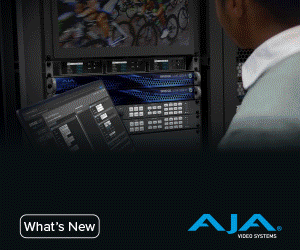Taking a Look at Upcoming 4K Video Trends
StarTech takes a look at upcoming 4K video trends including how it's being adopted, what barriers exist, true 4K ecosystem and more. Learn more about StarTech at: https://www.startech.com/.

4K: A Revolution in Resolution
Display technology has considerably advanced over the last decade. The 2K-to-4K UHD transition represents a giant leap forward in video realism and has created a lot of buzz with content creators. The industry’s demand for higher image fidelity and an immersive cinematic experience has catalyzed the technological advances required for a true 4K experience. When viewed from 3.5 to 5 feet away, 4K images on a 50 inch 4K TV are life-like, with more depth and color. Desktop displays at only 18 to 36 inches away display sharper and significantly more detailed images.
What is 4K?
4K resolution refers to a display device or content with the number of horizontal pixels comprising each line in the order of 4,000. These are the pixels that make up the picture. With four times more pixels than the resolution of a 1080p (2K) displays, 4K makes images clearer, sharper and more realistic. In the movie projection industry, the cinematic standard for 4K is 4096x2160. It is referred to as 4K DCI and has an aspect ratio of 1.9. In consumer displays and media broadcast industry, the standard used for 4K has a resolution of 3840x2160 and is known as 4K Ultra HD. It has an aspect ratio of 16:9.
How is 4K Being Adopted and Proliferated?
4K technology opens a world of possibilities for content creation and consumption. 4K UHD augments the viewing experience in applications like entertainment, digital signage, education, sports, surveillance, games and medical applications. Native 4K resolution is significantly better in resolving detail, allowing closer, more immersive viewing and scales down to 2K output with a higher quality picture than if created in 2K. An entire industry has emerged to enable a truly end-to-end 4K ecosystem - from capture, production, initial distribution, and secondary distribution to consumers. Consumer electronics equipment manufacturers, in particular, are embracing this revolutionary display technology and are the driving force behind making 4K mainstream.
What Barriers Exist to 4K Adoption?
1. The rapid advancement of 4K content creation has led to the proliferation of 4K consumer devices but have left broadcasters and content creators playing catch-up. 2. Creating end-to-end 4K content repositories to sustain consumer demands is costly. 4K video infrastructure, workflow management, and delivery require a large bandwidth. Due to its high threshold for resolution, frame rates, color depth, and chroma subsampling, it can stress the infrastructure serving media networks, and this could drive costly and disruptive upgrades. 3. Capturing 4K-ready content is an important variable in creating a complete 4K experience. Cameras and sensors used to capture content have to support very high frame rates, while image file formats must be suited to processing and integration into post-production workflows. These images can generate massive amounts of data which needs to be accessed, manipulated and stored, in real time. 4. Another challenge is that the quality of display output could be compromised by the number and quality of interconnecting devices between the signal source and the display. This signal degradation could be due to cable length restrictions, interference and compatibility issues. In a shared environment, this requires high-speed, low-latency connections for signal integrity. The solution to switch between streaming or hard-wired interconnections in these networks requires the use of high-quality splitters, matrix switches, extenders and converters to route and extend these signals to longer distances.
How Close are We to a True 4K Ecosystem?
4K UHD forecasts promise great opportunities and an exciting future for video ecosystems and industry experts from content creators to equipment manufacturers, alike. Increasing collaboration in the 4K value chain coupled with high consumer awareness and enthusiasm is evidence of positive momentum already. Advances in HDMI, DisplayPort, and Thunderbolt technologies are accelerating this transition, meaning life in 4K is well underway.





